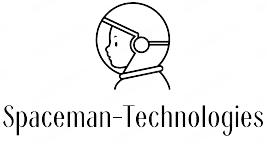Andrew is a British engineer with extensive experience of funding and inventing radically new hardware and software technologies – see Research History below. With a view towards raising the profile of UK engineering, and improving opportunities for the next generation of creative engineers and inventors, he is actively engaging with relevant bodies.
Apple litigation – As the inventor of several multitouch touchscreen and gestural interface technologies, Andrew was asked to act as an expert in the high-profile international patent dispute between Apple and Samsung. In recent litigation proceedings, Samsung used Andrew’s pioneering work and inventions to successfully defend itself against Apple’s illegitimate claims to inventions and technical patents pertaining to products such as the iPhone and iPad.

RESEARCH HISTORY:
Designing digital sound synthesis electronics for musical applications led to a keen interest in technology innovation. After a degree in electronics, and a number of years working in advanced military systems R&D, Andrew switched to applied psychology and computer science research at University College London.
Andrew went on to spend the late 90s working on an innovation management research project at London Business School and the University of Cambridge.
While working on PhD research, Andrew invented and built a Spatial Hypertext Object Management System – aka SpaceMan. This software system was similar to the recently launched platform Pinterest® – but had more sophisticated functionality – such as nested pages, and algorithms for integrating ‘big data’ analyses and visualisation. SpaceMan attracted interest and investment from Unilever and BMW, and was spun out into a management consultancy.
Returning to hardware in 2001, Andrew began working independently in London on advanced interactive surfaces and tangible computer interfaces. He prototyped many different electronic technologies; anticipating many of the multitouch and gestural computer interface systems that are now becoming commonplace. In 2003 Andrew was granted an award for this multitouch research from the National Endowment for Science Technology and the Arts (NESTA). Kinetica Museum exhibited some of this work (see image below), and he collaborated on a couture fashion show in Paris with the late Alexander McQueen.

Andrew moved on from interactive 2D surfaces and began pioneering the development of small tangible 3D objects sensitive to touch, orientation and movement. These computer devices included: the first ever cubic touchscreen computer – the Fentix Cube – which enjoyed significant mainstream media coverage; the TilePad tangible display technology; and a number of re-configurable micro-modular computer systems.
